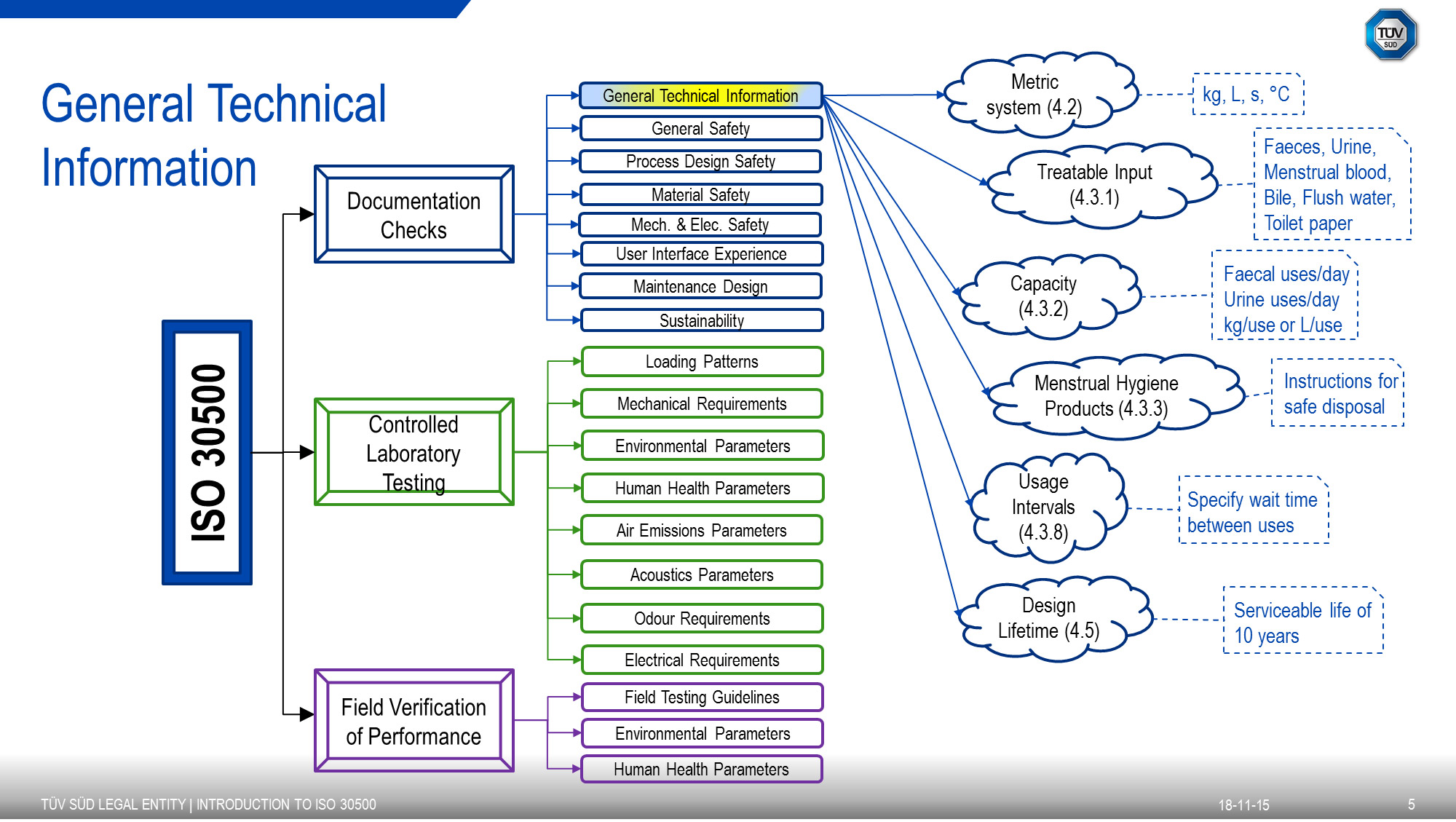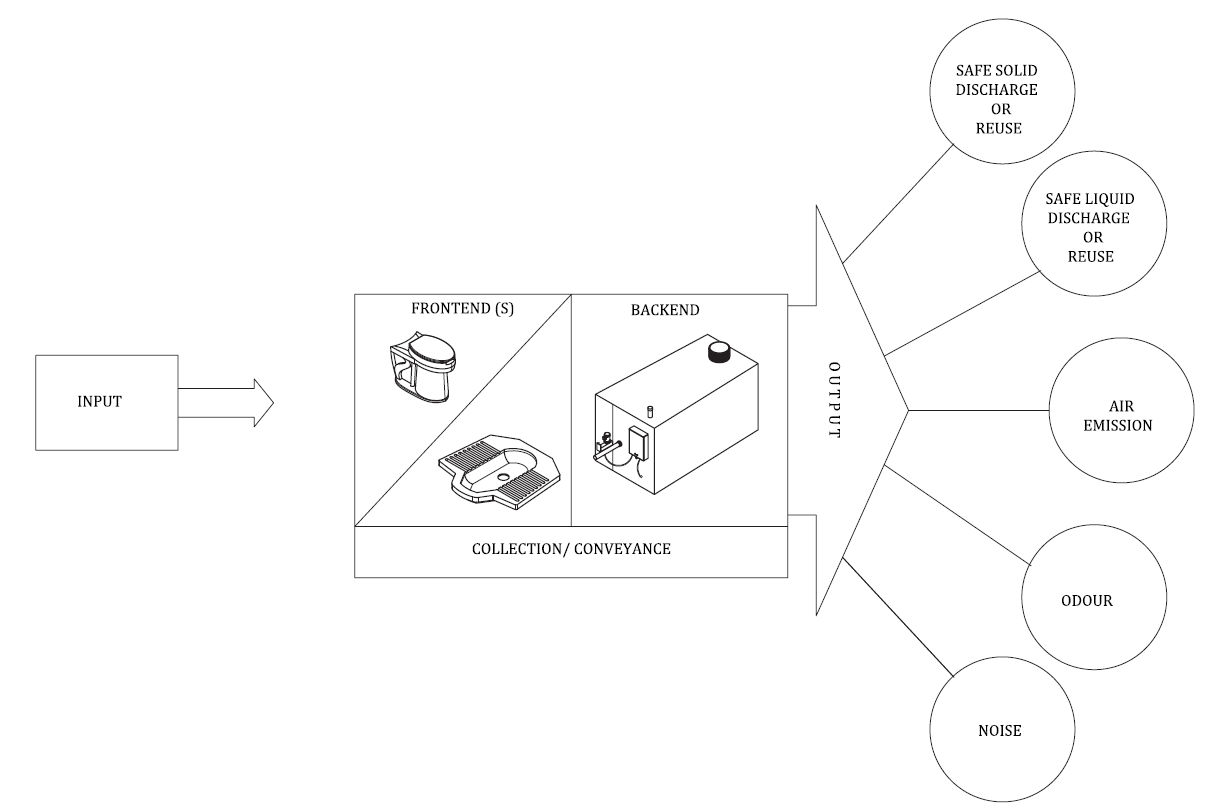ISO 30500 standards
What is ISO 30500?
ISO 30500 is entitled Non-sewered sanitation systems – Prefabricated integrated treatment units– General safety and performance requirements for design and testing.
ISO 30500 is a voluntary, international product standard, published in October 2018, for non-sewered sanitation systems (NSSS), that provides general safety and performance requirements for the product design & performance testing of prefabricated integrated treatment units that are not attached to a network sewer or drainage system.
The standard specifies technical requirements, test methods, and sustainability considerations for NSSS. It outlines criteria for the safety, functionality, usability, reliability, and maintainability of the system, as well as its compatibility with environmental protection goals.
ISO 30500 addresses basic sanitation needs and promotes economic, social, and environmental sustainability through strategies that may include minimizing resource consumption (e.g. water, energy) and converting human waste to safe output.
The standard provides safety and performance requirements for the following outputs:
- Safe solid discharge or reuse
- Safe liquid discharge or reuse
- Air emissions
- Odor
- Noise

The standard was developed with experts from 48 countries, representing industry, government, academia and non-governmental organizations. The draft of ISO 30500 was prepared by ISO/PC 305, the project committee on non-sewered sanitation systems, with twinned secretariats from the USA and Senegal, and included contributions from the African Water Association (AfWA) and the Toilet Board Coalition (TBC). ISO 30500 was published in October 2018 and underwent revision in 2023-2025. It was republished in July 2025 with revisions to performance requirements.

What is a Non-Sewered Sanitation Systems (NSSS)?
A prefabricated integrated treatment unit with:
- A frontend component (Toilet facility)
- A backend component (Treatment facility)
This system (see figure below) operates without connection to any sewer or drainage network by collecting, conveying, and fully treating the specific input within the system, to allow for safe reuse or disposal of the generated solid, liquid, and gaseous output.

NSSS around the World
Non-sewered sanitation systems can be installed in many different places around the world. Both urban and rural communities without access to sewer systems and communities and individuals pursuing sustainable sanitation solutions can use NSSS.
Non-sewered sanitation systems can be used in:
- rural communities
- schools
- green buildings
- national parks
- informal settlements
- train stations
- refugee camps
- emergency situations
- natural disasters
The NSSS is applicable for both public and private locations.
Improving Public Health
Water is a perfect habitat for bacteria, viruses, fungi, worms and other pathogens.
The United Nations estimates that 2.3 billion people do not have access to basic sanitation systems, and 1.8 billion people using a source of drinking water that is fecally contaminated. Human waste must be treated carefully to reduce diarrheal-related deaths around the world.
In using systems that abide by ISO 30500, the outputs of NSSS will be free of pathogens and safe to handle. ISO 30500 directly protects individuals, communities and resources such as drinking water from common pollution and outbreaks of potentially lethal diseases.
Social and Environmental Sustainability
Resource consumption, predominately water use, is minimized as many NSSS are able to recycle liquid discharge back into the system. Useful by-products from both liquid and solid outputs, such as liquid and solid nutrients, water for reuse, material for the generation of fuel and other reusable outputs (depending on the system) can be produced.
Everyone Benefits
In adopting ISO 30500, policy makers can rely on global expert opinion to ensure safety of the product for its citizens. Manufacturers, regulators, and government can tap into updated sources of information and experiences, without having to expend national resources as ISO standards are constantly maintained. Manufacturers will have a blueprint to use to create a product that meets international guidelines, making market entry easier and allowing them to focus on the development of features that will make the product stand out in the marketplace. The expansion of NSSS technology will drive innovation and also facilitate cross-border trade, as ISO standards provide an internationally recognized system that favors compatibility and consistency while giving customers the reassurance of the ISO name.
Toilet users will experience direct benefits from the expansion of NSSS. Water related deaths and rates of infection/contamination from waterborne diseases will decrease. Users will have the guarantee of a dignified, reliable, safe, hygienic, odor-free sanitation system.
Examples of Non-sewered Sanitation System (NSSS) Prototypes
Several prototypes are in development. Find out more here.
